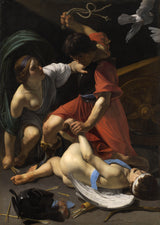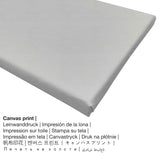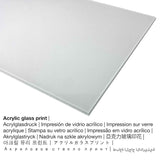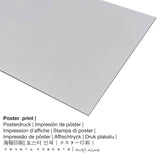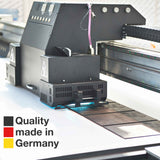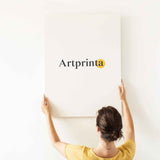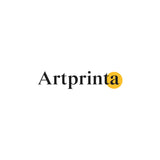Bartolomeo Manfredi, 1613 - Cupid Chastised - ọmarịcha nka
Ụtụ gụnyere. Mbupu gbakọrọ na ndenye ọpụpụ.
Ozi banyere ngwaahịa a
a nka ochie Ibé nka e kere site Bartolomeo Manfredi in 1613. Ụdị ihe osise ahụ nwere nha ndị a: 69 × 51 3/8 na (175,3 × 130,6 cm). Mmanụ na kwaaji was applied by the painter as the technique for the masterpiece. Today, the piece of art is in the the art collection of Art Institute Chicago in Chicago, Illinois, Njikota Obodo Amerika. Site n'ikike nke: Ụlọ ọrụ Art Chicago (ikike ngalaba ọha). Ọzọkwa, ọrụ nka nwere kreditline ndị a: Charles H. na Mary FS Worcester mkpokọta. In addition to that, the alignment of the digital reproduction is in portrait format and has a ratio of 1: 1.4, nke pụtara na ogologo bụ 29% mkpụmkpụ karịa obosara. Bartolomeo Manfredi was a painter, whose artistic style can mainly be attributed to Baroque. The European artist was born in the year 1582 in Ostiano, Cremona province, Lombardy, Italy and died at the age of 40 Na 1622 na Rome, Rome Province, Lazio, Italy.
Họrọ ihe gị
The product dropdown menu gives you the opportunity to pick your favorite size and material. You can select your favorite size and material between the following options:
- Mbipụta aluminom (aluminium dibbond): An Aluminium Dibond print is a print with an outstanding depth. A non-reflective surface structure make a fashionable impression. A direct Direct Print on Aluminum Dibond is the perfect introduction to the sophisticated world of art replicas made on aluminum. Colors are bright and luminous, the fine details are crisp and clear, and the print has a a matte appearance you can literally feel.
- Mbipụta kwaaji: The canvas print is a printed cotton canvas mounted on a wooden stretcher. A printed canvas of your favorite work of art will let you turn your art print into a large size collection piece. The great advantage of canvas prints is that they are relatively low in weight, meaning that it is quite simple to hang up the Canvas print without any wall-mounts. Therefore, canvas prints are suitable for any kind of wall.
- Akwụkwọ mmado ebipụtara (akwa akwa akwa): The Artprinta poster is a printed canvas paper with a nice finish on the surface. It is perfectly designed for framing your art copy in a custom-made frame. Please keep in mind, that depending on the absolute size of the canvas poster print we add a white margin of approximately 2-6 cm around the artwork, which facilitates the framing with your custom frame.
- Mbipụta iko acrylic (nke nwere ezigbo mkpuchi iko): The acrylic glass print, which is often denoted as a plexiglass print, will convert the original artwork into magnificient décor. Your work of art is being custom-made with state-of-the-art UV print machines. With an acrylic glass fine art print contrasts as well as details will be more exposed due to the very subtle gradation of the picture.
Important legal note: We try the best we can to describe the products in as much detail as possible and to illustrate them visually. Nonetheless, the colors of the printing material and the printing can differ marginally from the presentation on the device's monitor. Depending on your screen settings and the quality of the surface, color pigments can unfortunately not be printed as realistically as the digital version depicted here. Bearing in mind that all our art prints are printed and processed manually, there might also be slight discrepancies in the exact position and the size of the motif.
Banyere ngwaahịa
| Nkewa ngwaahịa: | ọrụ mgbidi |
| Usoro mmeputakwa: | dijitalụ mmeputakwa |
| Usoro nhazi: | Mbipụta UV / dijitalụ |
| Ihe ngosi: | Germany |
| Ụdị ngwaahịa: | mmepụta ihe na-achọ |
| Eji ngwaahịa a chọrọ: | ihe ndozi mgbidi, foto mgbidi |
| Nhazi nka nka: | nhazi ihe osise |
| Njikwa oyiyi: | 1: 1.4 |
| Pụtara nha akụkụ onyonyo: | ogologo bụ 29% mkpụmkpụ karịa obosara |
| Nhọrọ ihe onwunwe: | akwụkwọ mmado (akwụkwọ kwaaji), mbipụta enyo acrylic (nke nwere ezigbo mkpuchi iko), mbipụta ọla (aluminium dibond), mbipụta kwaaji |
| Nhọrọ nke Canvas Mbipụta (akwa akwa na etiti ihe ndọtị): | 50x70cm - 20x28", 100x140cm - 39x55" |
| Mbipụta iko acrylic (nke nwere ezigbo mkpuchi iko): | 50x70cm - 20x28", 100x140cm - 39x55" |
| Mpempe akwụkwọ mmado (akwụkwọ kwaaji) nha: | 50x70cm - 20x28" |
| Mpempe akwụkwọ Dibony (ihe alumnium) nha dị iche iche: | 50x70cm - 20x28", 100x140cm - 39x55" |
| Nhazi mbipụta nka: | enweghị etiti |
Tebụl a haziri ahazi nke mpempe nka
| Aha ọrụ nka: | "Cupid Chastised" |
| Nhazi nka: | sere |
| Okwu mkpokọta: | nka ochie |
| Time: | 17th narị afọ |
| Emepụtara n'afọ: | 1613 |
| Afọ nka: | ihe dị ka afọ 400 |
| Ihe osise izizi: | mmanụ na kwaaji |
| Akụkụ izizi (ọrụ nka): | 69 × 51 3/8 na (175,3 × 130,6 cm) |
| Ụlọ ihe ngosi nka: | Ụlọ ọrụ Art Chicago |
| Ebe ngosi nka: | Chicago, Illinois, Njikota Obodo Amerika |
| Weebụsaịtị ihe ngosi nka: | www.artic.edu |
| Licensedị ikike: | ngalaba ọha |
| Site n'aka: | Ụlọ ọrụ Art Chicago |
| Ebe kredit nke ọrụ nka: | Charles H. na Mary FS Worcester mkpokọta |
Tebụl nyocha nke onye na-ese ihe
| Aha onye nka: | Bartolomeo Manfredi |
| Aha ndị ọzọ: | Manfredi Barth., Manfredy, Barth. Manfredi, Manfredi Bartolomeo, Manfredo, Menfredi, Manfredi scolaro del Caravaggio, Bartolomeo Manfredi milanese, Manfreddi, Manfredi, Manfride, Manfredi scuolaro di Caravaggio, Bart. Manfredi, Manphredo, Bartholomeo Manfredi, Bartolomeo Manfredi, Bartolomeo Manfredo, Bartolomeo Manfreddi, Monfredo, B. Manfrede, Manfredi Bartolommeo, B. Manfredo, Mamfredi, Manfrede, bartolommeo manfredi |
| okike nke onye nka: | nwoke |
| Obodo onye nka: | Italian |
| Ọrụ: | onye na-ese ihe |
| Obodo onye nka: | Italy |
| Otu nka: | nna ukwu ochie |
| styles: | Baroque |
| Oge ndu: | 40 afọ |
| Afọ ọmụmụ: | 1582 |
| Ebe amụrụ onye: | Ostiano, mpaghara Cremona, Lombardy, Italy |
| Nwụrụ n'afọ: | 1622 |
| Nwụrụ na (ebe): | Rome, Rome Province, Lazio, Italy |
© Nwebiisinka nke, Artprinta.com
Nkọwa zuru oke dị ka ihe ngosi nka nyere (© Nwebiisinka - nke Art Institute Chicago - www.artic.edu)
Following the example of the revolutionary early seventeenth-century artist Michelangelo Merisi da Caravaggio, Bartolomeo Manfredi chose to depict ordinary individuals in his scenes from the Bible and Greek and Roman mythology. Caravaggio had demonstrated to Manfredi and an entire generation of European artists that such lofty themes could be transformed into events experienced by ordinary people. Employing dramatic lighting and locating the action directly before the viewer, these artists were able to endow their narratives with great immediacy and power.

